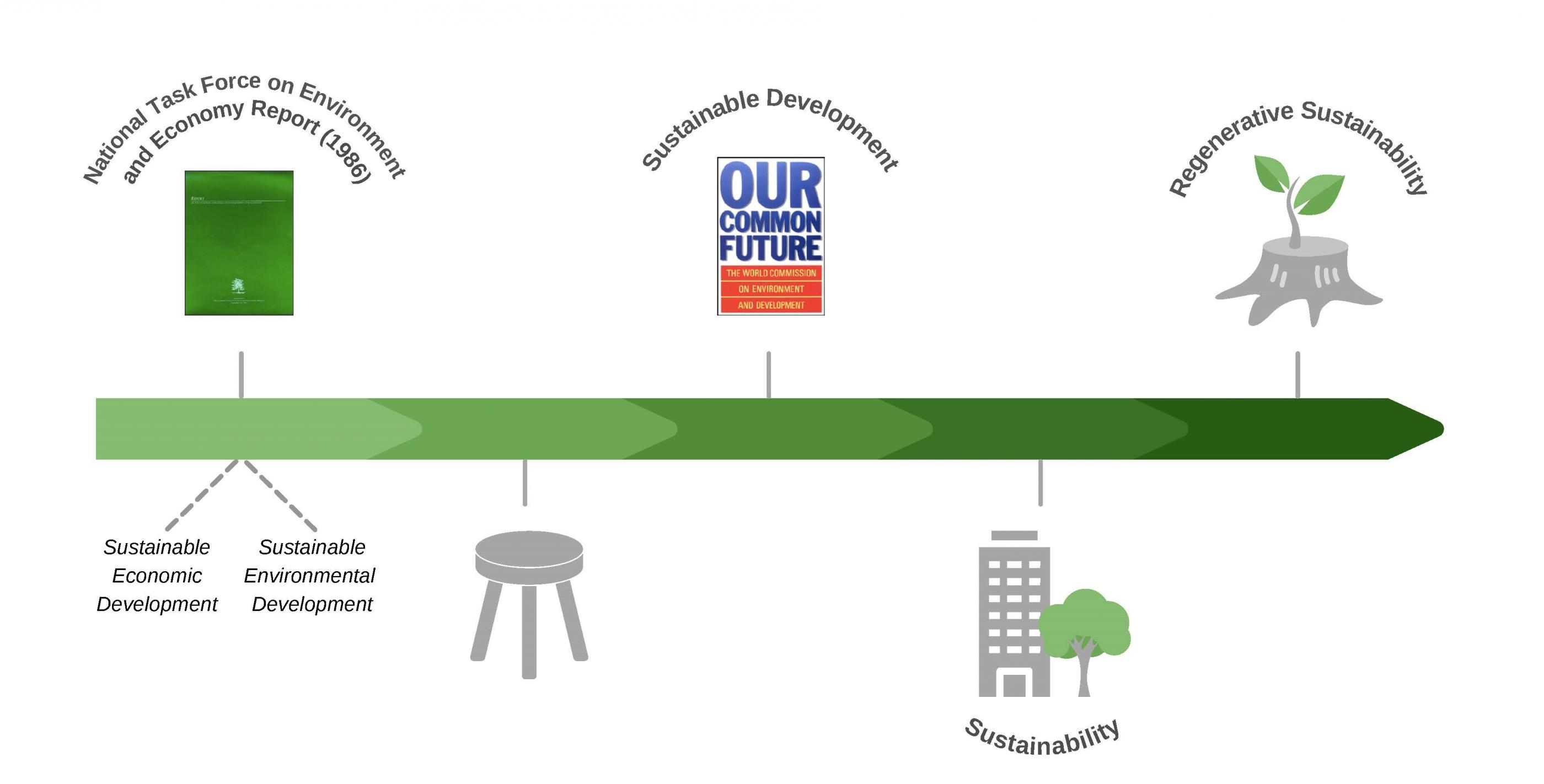Regenerative Sustainability

Sustainable development, the concept, has evolved considerably since its popularization by the Brundtland Commission report in 1987. The diagram above shows the evolution in thinking since 1986 when the Federal Government established the National Task Force on the Environment and the Economy.
Despite criticism of the concept as vague, impossible to define, and attempts to keep qualifying it as either environmental or economic sustainable development, we have now moved to greater understanding of integration, to regenerative sustainability. Regenerative sustainability is about sustainability +, not just stopping doing new damage, fixing the problems (Burt, personal communication), but fundamental interdependence that is generative, its focus is on net positive outcomes, vital connections, putting the future of life at the heart of everything we do.
Regenerative sustainability differs in two keyways. First, it recognized the interconnectedness between human and environmental wellbeing and focuses equally on both. Second, it emphasized the goal of creating net positive outcomes in human and environmental wellbeing, not just reductions in damage or doing no harm. In other words, it asks, can our activities improve both environmental quality and human wellbeing? I am very pleased that the MEM curriculum has been redesigned to integrate this leading-edge thinking, including regenerative innovation solutions.
The picture below depicts what it means for me.
